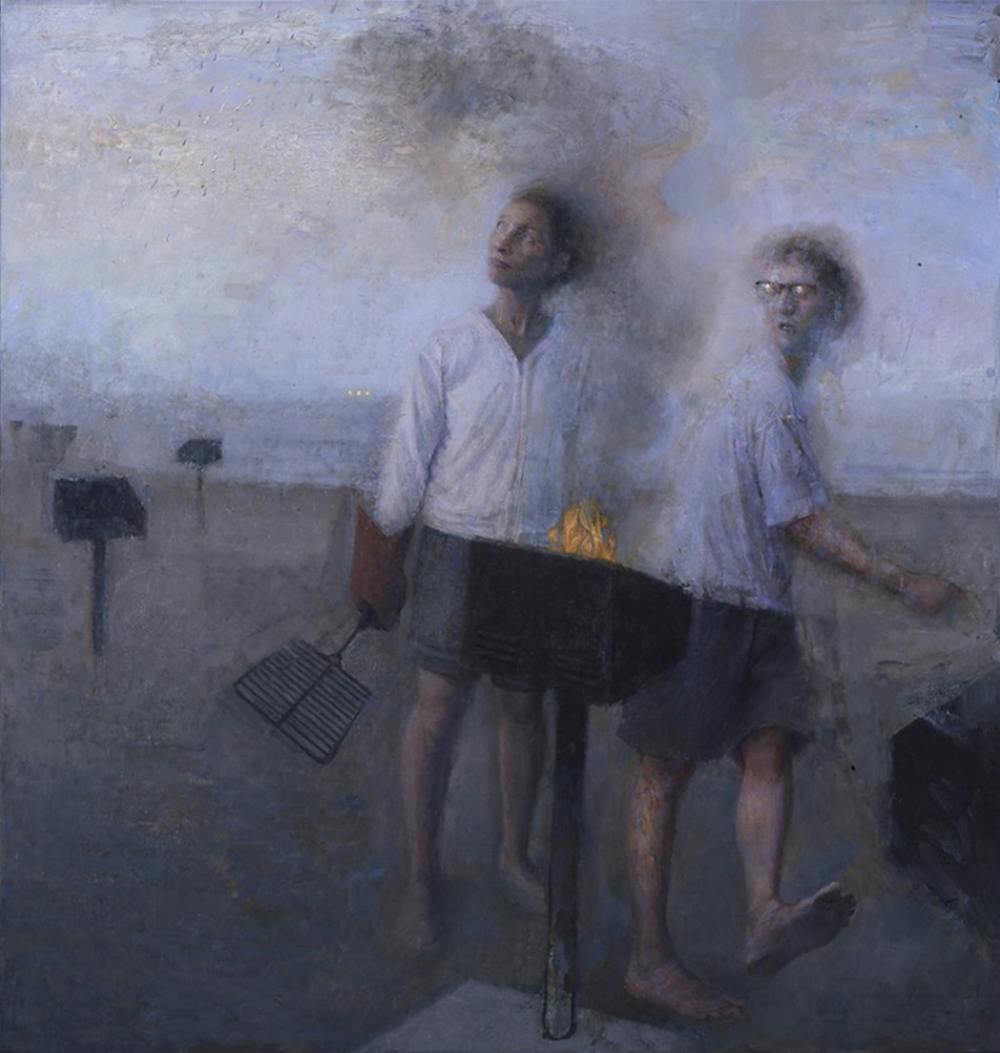A massive octopus covers a house, tentacles stretching across the lawn.
A naked female acrobat hangs from a hula hoop as men peer from below. A glowing moon. A looming lion. Costumed children.
In the Grunwald Gallery of Art in the Fine Arts building, interested visitors gather to admire the newest showcases.
Two distinct exhibits, “Slow Hand” and “Implied Action: Performance Through Object” opened Friday at the Grunwald Gallery of Art. Both exhibits will be on display through ?Feb. 13.
“Implied Action” showcases the sculptural work of four visiting assistant professors at IU, Carissa Carman, Mike Calway-Fagen, Carrie Mae Smith and Keith Allyn Spencer.
Marla Roddy, who helped organize “Implied Action,” chose artists whose works focus on the relationships between the artist, object and performance.
“Across the board, the artists in ‘Implied Action’ convey some level of performative action through their creation and choice of objects,” Roddy wrote in the “Implied Action” pamphlet.
Senior lecturer and artist Tim Kennedy, who organized “Slow Hand,” said he aimed to highlight the process and imagination that goes into creating a work ?of art.
“A drawn-out process gives a different reward,” Kennedy said. “I like it very much.”
“Slow Hand” showcases IU faculty along with artists from other parts of the country, including Nancy Barnes, John Brosio, Paul Fenniak, F. Scott Hess, Tina Newberry and Caleb ?Weintraub.
Many of the artists are people whose work Kennedy has long admired, ?he said.
“I saw a connection between the artists in their ability to compose art in an interesting and dramatic way,” Kennedy said. “But the works also look different from each other.”
Caleb Weintraub, associate professor of painting at IU, creates a variety of works. He may use oil on canvas or combine digital prints with paint.
Weintraub often uses dioramas, Photoshop or 3-D visual environments as a basis for his paintings.
The result consists of landscapes and figures that Weintraub calls “otherworldly.”
Associate Professor of Painting Tina Newberry incorporates photo images directly into her artwork and is largely improvisational. She detailed her process in response to Tim Kennedy’s questionnaire.
“I have no setup or model from which I work,” ?Newberry said. “At the start of each painting, I push paint around ‘til I get shapes and then go from there.”
A lecturer at Laguna College of Art and Design, John Brosio’s work also illustrates the importance of process in art, even if that process is not always well-defined.
“There is a lot of preliminary drawing and sometimes even model-making,” Brosio said. “I am learning that all of the best ideas come some three or four paintings into the process — that is, when the unpredictable shows up, the really wonderful surprises.”
F. Scott Hess, who also teaches at Laguna College of Art and Design, gave a lecture the opening night of the exhibit. Before his and others’ art were revealed, he spoke about his work and career.
“I would rather be painting than just about anything else,” Hess said.
Hess creates figurative and narrative paintings. Dutch art, his family history and artist friends serve as inspiration for much of his work, which sometimes sparks controversy.
He has painted a woman giving birth and a ?urinating boy.
Recently, he has created works based off of panoramic images taken with his iPhone.
“I think that is part of (Kennedy’s) goal, to include people in the show who are doing things that are a little off the beaten path, a little edgy or humorous,” ?Weintraub said.
While the work exhibited in “Slow Hand” varies, the art is united by the context of delay or slowness that goes into the process of ?creation.
That slowness helps to accurately produce the artist’s vision, whether it is narrative, figurative or ?surrealist work.
“Tim is showing work he considers to be very ‘present,’” Brosio said. “Work that is loud and firm without that kind of speedy yelling we sometimes find in ?‘expression.’”






